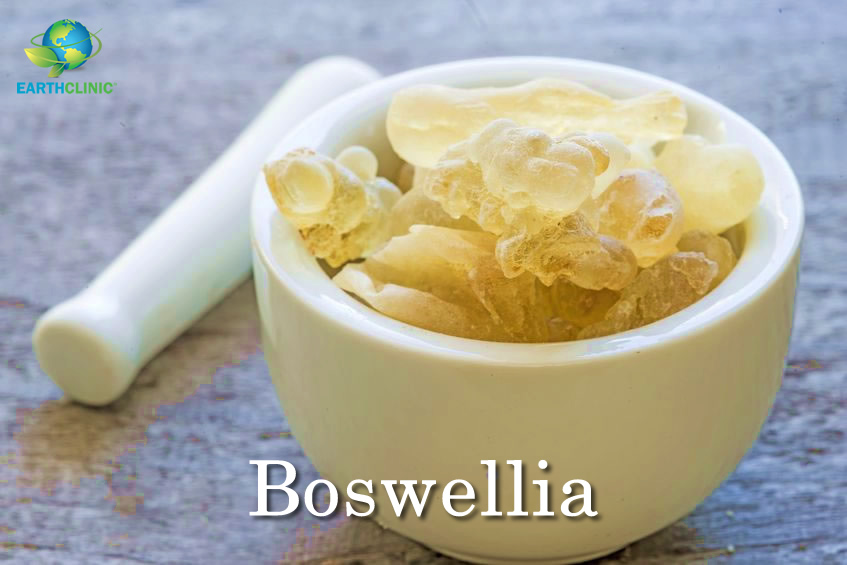Asthma
★★★★★

Take boswellia alone right after a meal (or toast atleast) to ensure max absoption (& other meds or vitamins 1-2 hrs later). Intuitively, I opted to skip my son's asthma pill (he did take his allegra), so I fully expected him to wake me for a breathing treatment. I felt guilty doing that, but he slept through the night. He woke up breathing TOTALLY CLEAR! GONE was his sneezing, nose blowing, eye rubbing morning routine & his lungs were clear. I was dumbfounded speechless. I've never seen anything like it, nor did I expect any noticeable result in 1 DOSE- we did NOTHING different except boswellia, there's no way this can be attributed to anything else. I still give his nightly allergy pill & will continue until it gets cold enough for stuff to stop blooming, then we'll drop that too.
It's been 7 days now in the height of the WORST allergy season, & my son has used ZERO asthma meds the entire time, his breathing is so clear it's like he never had asthma in the first place. He had a double header baseball game last night - no nebulizer before hand, & never pulled out his inhaler. He will take this for the rest of his life, there are so many benefits! I hope & pray that anyone who tries this will have the same amazing results. My allergies are better but not gone, I have not needed an inhaler. My lungs have never felt so clear, it's like my lung capacity has actually expanded/increased... There really aren't any contraindications w/boswellia. Consult your doctor if you take a bunch of meds, & esp.if you take anticoagulants. Less than 1% of ppl felt it made their blood pressure go high/wonky, some said it upset their stomach (take right after food). Boswellia can make other meds more effective, so dose may need reduced (or stopped). Boswellia has NSAID (Ibuprofen/aleve) like action in the body, so it's best not to take those together for prolonged time (1 week max).
If u take boswellia for pain/arthritis, u may need to build to higher dose. Studies showed safe up to 3,000 mg daily (2- 500 mg caps Breakfast/lunch/dinner). IF YOU ARE ALLERGIC TO FRANKINCENSE essential oil (incense allergy may be due to other additive factors), DO NOT TAKE or consult your doctor first.
(NE Iowa)
06/15/2021
I wish there was some way you could provide the brand name. Could you type it out separating each letter with an *? I didn't "get" your clue. Thank you so much!
EC: She's referring to the NOW brand.
(Jamaica)
08/28/2021
Thank you for this. I used to use the tears, as aromatherapy but since 2019 I have noticed a marked difference in the quality of the resin. It now looks very pretty and super clean 'manufactured', and it smells awful, like burning plastic. Not sure if its fake or just another species of the boswellia. I have given up trying to find the good old fashioned tears and am now looking for the oil.
Asthma
★★★★★
For a different health issue, I started taking some supplements. Among them was Boswellia. I took Boswellia and Maitake mushrooms for the longest--over a year--and I noticed that at the end of this time, if I encountered an allergen like dust, it triggered all my allergic reactions EXCEPT asthma.
I didn't notice any other change in my routine except taking Boswellia and Maitake. I looked up Boswellia online, and saw that it is used for asthma, so I began to draw the conclusion that it has helped me. Even since I stopped taking Boswellia, I have not had to use an inhaler for months.
I'm interested to see if anyone has experienced using boswellia for asthma (and if it could have been the maitake mushrooms, even though they are not described online as having that effect).
I took Boswellia, two 307 mg tablets (65% Boswellic Acids) each morning.
Ganglion Cyst
★★★★★
Neurodegenerative Disorders
★★★★★
PMID: 32440312
Genus Boswellia as a new candidate for neurodegenerative disorders
Arezoo Rajabian, 1 HamidReza Sadeghnia, 2,3 Sahar Fanoudi, 2 and Azar Hosseini1, *
Abstract
Neurodegenerative diseases, characterized by progressive loss of neurons, share common mechanisms such as apoptotic cell death, mitochondrial dysfunction, inflammation, and oxidative stress. Genus Boswellia is a genus in the Burseraceae family. It comprises several species traditionally used for treatment of chronic inflammatory diseases, cerebral edema, chronic pain syndrome, gastrointestinal diseases, tumors, as well as enhancing intelligence. Many studies have been carried out to discover therapeutic approaches for neurodegenerative diseases such as Alzheimer's diseases, Parkinson's disease, Huntington's disease, multiple sclerosis and amyotrophic lateral sclerosis, stroke, and concomitant cognitive deficits. However, no curative treatment has been developed. This paper provides an overview of evidence about the potential of the Boswellia species and their main constituents, boswellic acids, as modulators of several mechanisms involved in the pathology of the neurodegenerative diseases. In vitro, animal, and clinical studies have confirmed that Boswellia species contain bioactive components that may enhance cognitive activity and protect against neurodegeneration. They exert the beneficial effects via targeting multiple pathological causes by antioxidative, anti-inflammatory, antiamyloidogenic, and anti-apoptotic properties. The Boswellia species, having neuroprotective potential, makes them a promising candidate to cure or prevent the neurodegenerative disorders.
Key Words: Alzheimer's diseases, Boswellia, Cognitive, Neurodegenerative, diseases Neuroprotection



